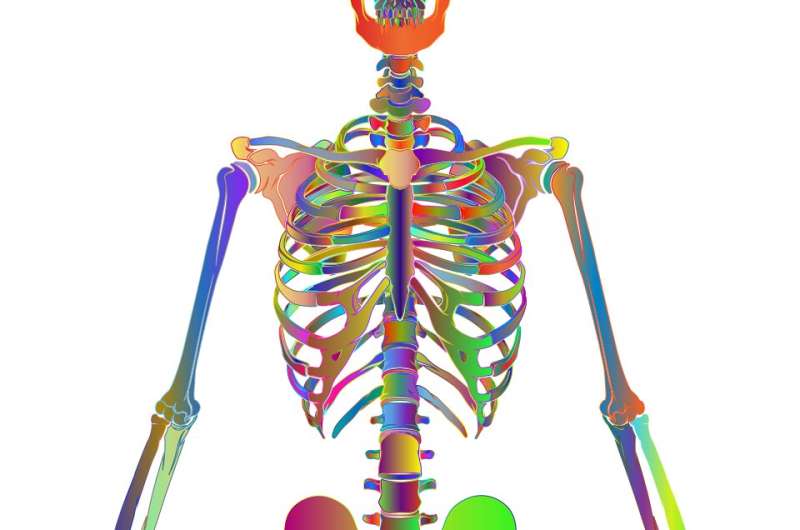This article has been reviewed according to Science X's editorial process and policies. Editors have highlighted the following attributes while ensuring the content's credibility:
fact-checked
proofread
Effectiveness and safety of osteopathic treatments in relation to pain in the musculoskeletal system

Chronic low back pain and other chronic back problems are the most common health problems in Austria: it is estimated that almost half of all Austrians suffer from chronic neck, low back or back pain, which is extremely burdensome in everyday life and reduces the quality of life.
Osteopathy, whose holistic approach aims to improve all aspects of health, could—according to the claim of osteopaths—be used as a supplement or alternative to conventional medical treatment. According to the World Health Organization (WHO), osteopathic interventions are defined by special handgrip and mobilization techniques for diagnosis and treatment.
The AIHTA has now critically analyzed the evidence on osteopathic treatments for adults with musculoskeletal pain and examined the training and quality requirements of selected European countries. For this purpose, 15 randomized control trials on seven body regions were evaluated. The second part dealt with questions concerning the regulation, training and practice of osteopathy. In order to complete the data, experts from the countries studied were also interviewed.
"There are no uniform legal regulations for the practice and further training of osteopathy worldwide. In many countries, these are being discussed or have already been introduced. In Austria, however, neither the term osteopath is protected nor are there regulations on training, practice and continuing education," explains study leader Lucia Gassner from AIHTA.
Potential and side effects
In the process of the analysis, the effects were first divided into four follow-up periods (immediate, short-, medium-, long-term) and according to the body region. The results regarding the improvement of pain varied depending on the follow-up period: for example, osteopathic treatments for neck pain led to immediate and medium-term improvements, while for patients with osteoporosis, no immediate improvements in pain could be demonstrated after six treatment sessions.
Medium-term improvements were also seen for low back pain and possibly foot and shoulder pain. The results on other outcomes, such as functionality or quality of life, were too heterogeneous to show a trend. Side effects such as increased pain, dizziness or cramps were extremely rare.
"Osteopathy can be considered a safe form of treatment, as hardly any side effects were reported. There were short- and medium-term improvements for neck and low back pain, while the results in other regions were inconclusive. In addition, all studies had a high risk of bias—for example, due to a lack of blinding or deficiencies in concealed allocation," Gassner says.
Legal issues, training and quality standards
The second part of the report examined questions concerning the legal regulation of osteopathy: In addition to the WHO standard, which describes professional principles and training programs, there is also a European standard, which contains specifications for training, safe practice and clinical practice.
In detail, ten countries (Austria, Switzerland, Germany, Denmark, Finland, France, Italy, Norway, Portugal, UK) were examined: In seven of these countries (Switzerland, Denmark, Finland, France, Norway, Portugal, UK) there is a legal regulation, in addition the professional title osteopath in is fully protected (exception: Norway). Only in Denmark, Norway and Portugal the legal regulation is based on the two standards—in the other countries the implementation already took place before the publication of the documents.
The training opportunities and curricula differ from country to country. In all countries (except Austria, Germany and Italy), a minimum education for practicing the profession at Bachelor level is prescribed. In the UK, ongoing professional development is also mandatory.
Osteopathic treatments are only covered by private insurance in all countries surveyed—in Germany and Austria, health insurance providers can cover or subsidize the costs in some cases. "A legal regulation and the protection of the professional title in Austria is of crucial importance before costs are reimbursed. This is the only way to ensure that only osteopaths with certified and quality-assured training and licensing practice and that uniform training and quality standards are adhered to," Gassner concludes.
More information: Report: eprints.aihta.at/1416/


















